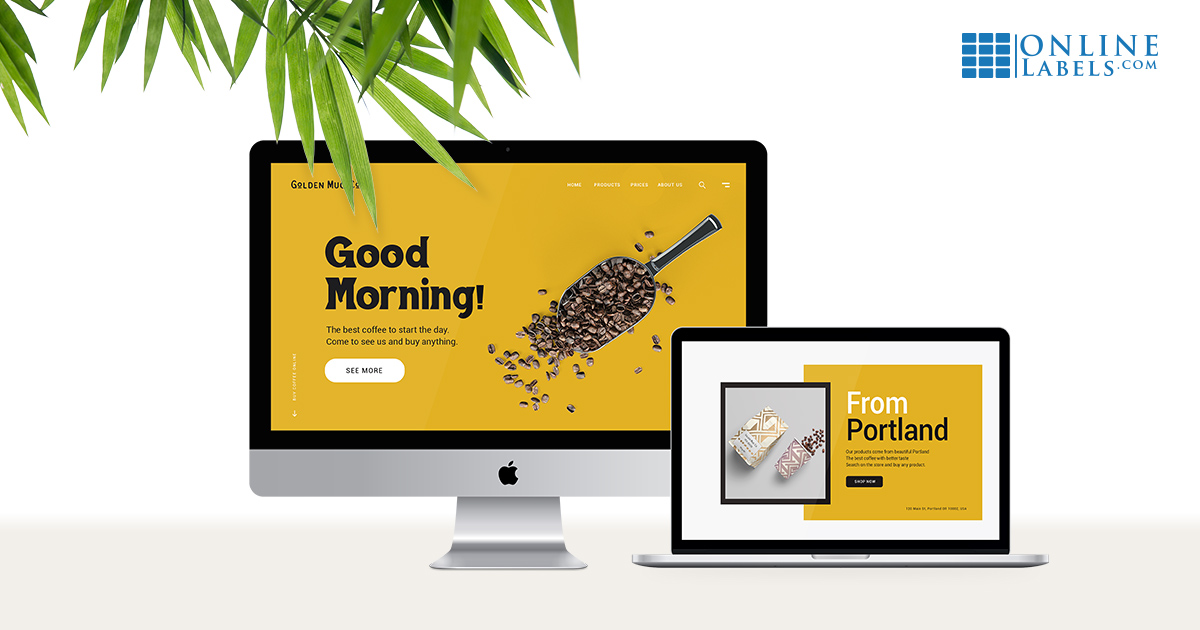18 Things To Work On When Business Is Slow

If your business is like thousands of others, it probably ebbs and flows throughout the year. Some periods are busy and produce the majority of your income while others are slow and quieter.
But dry spells don't have to be a time of idleness. In fact, lulls in business can be gift – a chance to step back and refocus your efforts on growing your small business instead of just running it.
In the following article (and accompanying video), we dive into 18 things you can do to maximize your downtime and improve your business.
Feeling discouraged or run-down? Get a motivation pick-me-up and tips on staying focused from like-minded entrepreuners before jumping back in.
Focus On Product Development

Try experimenting with new products. Test out different scents, color schemes, designs, and/or recipes. Ask your customers for recommendations or suggestions, review your sales numbers to identify trends, do research on your competitiors, see what's selling on Etsy, etc. The opportunities for new ideas are endless and you may just stumble onto a new best-seller.
If you're in the bath and beauty industry, see how you can switch it up while still using your existing supplies. See what products you can make with beeswax, soy, and honey.
If you're looking for new product lines altogether, read our guide on how to develop ecommerce products. It covers product ideation strategies to help you think outside of the box.
Update Your Website

Spending time on your website is a great way to build consumer confidence and present a more professional appearance. It's often a back-burner project, but that makes now the perfect time to tackle it! Listed below are some high ROI (return-on-investment) projects to focus on.
Beef-Up Product Descriptions
Consumers want more information, but they also want it in an easily digestible format. Consider including all the pertinent details, broken up into several small paragraphs.
Be sure to include:
- What it is – Mention your product type again for customers who skim, even if it's listed as the title of the page.
- Color/scent/fabric details – Describe everything in great detail and with expressive adjectives. Consumers can't see, smell, or touch your product for themselves so you need to be their eyes and ears.
- Size specifications – Include any measurements or dimensions that could influence a purchasing decision.
- Ingredients or production materials – List everything. Society has become extra-conscious of what goes on, in, or near our bodies, so it's best to anticipate their questions.
- Use instructions – Spell out best practices for your product, even if they're self-explanatory. For lotions, describe times when your skin is most receptive. For candles, explain how you need to let it burn the first time until the entire top layer melts, etc.
Learn more about marketing copywriting to create the most informative product pages on the internet.
Improve Product Photos
Online shopping has become highly visual. When faced with a sea of similar products, consumers tend to go based on pictures and price (we'll expand on this in a moment).
So, make sure your product photography conveys a high level of quality and professionalism.
Employ these tricks and advice to get the best shot:
- Determine your background – Consider the rules of your sales platform before staging your setup. Amazon, for example, requires a white background for your main product image. But on your own website and for subsequent photos, the world is your oyster.
- Set the scene – Choose a scene that makes sense and highlights your product. Grab props, show different scenarios or environments, and the like. People want to visualize how your product will fit into their life, nows your chance to show them.
- Use professional equipment – DSLR cameras and some of the newer phones on the market are great options. They produce high-quality images that look crisp and clear.
Check out more product photography tips for beginners.
Not into photography? Use mockups. There are plenty of mockup libraries online that can work for your shop. With some basic editing skills, you can build consistency across listings. For example, if you're selling art prints, consider finding a mockup of a picture frame on a bookshelf.
You should also consider adding new photos to your listings once you've got the basics down. Consider these great shot ideas for your website:
- In-use – Match a photo to the instructions you recommend in your product description.
- Comparisons – Set your product next to a well-know item of similar size and stature to help consumers get a feel for its dimensions.
- Close-ups – Showcase the glossy sheen of your stickers or the subtle texture in your fabric.
- Angles – Illustrate how thick your bar of soap is from the side and top, as opposed to just lay-flat or front-facing shots.
- Variations – Let customers see the different colors or sizes if your website offers variations.
Create Product Videos
Product videos are an incredibly helpful way to promote your listings and give potential customers an in-depth look at your products. You're able to add them to most storefronts like Amazon and Etsy, and they can double as social media content (engagement is significantly higher for video).
Of course, many of the same rules for product photography apply. Use select a good background, find good lighting, etc. But there's more to it for video. Here are a few extra things you should know about making product videos:
- Shoot horizontally – Vertical videos are great for social media Stories, but they won't do your product justice on product pages.
- Steady your hand – Movement is good but shaking or nervous hands can ruin a shot. Use a tripod or make-shift armrest to create smooth visuals.
- Remove the original audio – Unless you're talking or providing product explanations, background noise is something you can do without. Add music in your editing software instead.
- Focus and re-focus – Make sure your product is in-focus for every new scene. Blurry clips can render a shot unuseable.
Get more great video production tips from our very own video producer.
Review Your Return Policy
Returns are viewed as a good customer service practice. But you can't offer this benefit without first outlining your policies. A good policy should include:
- Statement about exchanges – Exchanges can be more difficult logistically, so many small businesses choose not to offer them. If this is the case, explain your refund-and-repurchase policy. Keep in mind that for certain industries (clothing, for example) exchanges may be the most helpful option to customers.
- Permitted time-frame – You probably won't accept returns years after the purchase, so be clear with what you consider an acceptable return period. We've seen as little as 7 days and a much as 120.
- Return shipping – State who is responsible for the cost of return shipping. Some businesses subtract it from the refund while others cover it themselves or ask the customer to pay out-of-pocket.
Don't forget to link back to your policy from product pages. It can help instill confidence in your customers and promote purchasing. You should also note the policy for each platform you sell on, if you're using third-party marketplaces like Amazon and Etsy. Get more information about small business returns.
Create New Content
Take this time to draft up content for later. You'll be building up your arsenal for when things pick back up and downtime is a fleeting memory.
Generate Social Posts

Up your social media marketing game. Use photos from your website and content from your new product pages to create an endless supply of posts. Save them all in a folder and organize them using a content calendar so you're ready to put them to use.
Hear from OnlineLabels.com customer Urban Oreganics on how they use Instagram to market their business.
Add To Your Blog
Blogs are an excellent way to keep customers engaged, humanize your small business, and draw traffic from search engines like Google. Give one (or all) of these topics a try and see what feels natural and entertaining:
- Small business – Detail your experience as a small business owner, how you got started, where you see the business going in the future, etc.
- Your personal life – Talk about what's going on in your life, with your family, what books you're reading, etc.
- Product details – Give customers insight into your product creation process, the ideation stage, how they benefit consumers, etc.
- Timely topics – Relate your products back to the season, upcoming holiday, or hot topic.
- Lists – Write top 10 lists of your favorite products, most incredible customer reviews, etc.
You can also go back and add to old blogs on your site, too. Explore more advice on spicing up your blog.
Collect Reviews & Testimonials
According to BrightLocal, 91% of people read online reviews and 84% of those trust online reviews as much as a personal recommendation. If you don't have a repository of customer comments, start gathering them with these methods:
- Email after purchase – Send an email after each product is delivered with a link for customers to submit a review.
- Surveys – Reach out to your entire customer base or only people within a specific sub-group and ask them to fill out a quick survey about their experience.
- Give them a ring – Get direct feedback by calling customers and asking them how they like your product.
- Q&As on your product pages – See if existing customers leave nice compliments in their questions about different products.
Once reviews start coming in, do you know how to handle them? Find out how to respond to reviews.
Score Press Coverage
Get your name out there, for free! Your alma mater, local news stations, small business groups, and chambers of commerce (to name a few) may be interested in covering your business. Understand what journalists find interesting, then draft your pitch.
There are other ways to garner free press, besides the old-school methods. Joining podcasts, guest posting on other well-known blogs, or partnering with influencers are popular PR tactics in today's modern, connected world. That's just 3 of our top 10 ways to get published online. Check out our article to get more ideas and details on how to get started.
Redesign Your Product Labels

Your product and business have likely changed since you first designed your packaging and launched your products. Run through the following list of design tips to see if you can refresh your packaging for the better.
- Note your demographic – Think through the motivations of your prospective customers, what can you do to make them lean in to your product and ultimately purchase?
- Consider your label material options – Show off your product through its packaging with a clear label, use a metallic label to imply luxury, or catch the attention of passersby with a glossy label.
- Play with the fonts – Make sure it's readable. Overly script fonts or really small fonts are great in theory but not always in practice. Learn more about font selection.
- Add pictures – Help consumers understand your product faster with a close-up of the texture or an illustrative symbol to represent the flavor.
- Color-code product lines – Keep your branding consistent by only changing the colors in each product label. Turn the label yellow for banana-scented candles and red for strawberry.
- Update the content – Provide the right information to your customers. Include important details that will convince your customers to purchase.
Design can be tricky, don't be afraid to pass the baton to a professional if you're out of your element. See how you can find a graphic designer, or keep it in-house and learn how to design product labels.
Consider New Frontiers
If you're only selling in one or two places, there are a plethora of new opportunities out there. Read through this list to see where else you can launch your business to sell product.
Try New Consumer Marketplaces
Marketplaces come with built-in audiences so they're a great way to get in front of new consumers quickly. Business-to-consumer marketplaces worth looking into include:
- Amazon – One of the most popular online marketplaces for all types of goods.
- Etsy – The go-to site for handmade, artisanal goods.
- eBay – A big player in the clothing and used goods categories.
- Walmart – A favorite for affordable products.
- aftcra – An Etsy-lookalike for handmade crafters in the United States.
- ArtFire – A place for international makers and indie businesses.
- craiglist – The online classifieds.
- Facebook Marketplace – A social platform for new and used items.
- indieCart – A marketplace for environmentally conscious brands and consumers.
Review the pros and cons of popular consumer marketplaces.
Check Out Wholesale Marketplaces
If you want to ink a deal with a big retailer, marketing to wholesale buyers is your next move. These business-to-business marketplaces can put you in front of the right people if you're trying to go retail.
- RangeMe – Buyers here include large corporations like Target, Ulta, and more.
- Faire – These buyers are looking to fill their small shops and boutiques.
- FGvendors – One of the original sites in this category.
- Joor – A platform focused on fashion.
- NuOrder – A platform for large clothing companies like Nordstrom.
Evaluate if wholesale marketplaces are right for your business.
Build Your Own Website
If you don't already, consider launching your own website. Some platforms, like Amazon, control your customers. By going off on your own, you're in control.
View our quick list of website builders:
- Shopify – One of the biggest players in the DIY website space.
- Jumpseller – A strong option for non-native English speakers.
- Squarespace – A favorite for elegant design templates.
- Wix – For computer users who aren't super savvy.
- Weebly – Designed with easy-to-use and advanced features.
- Tilda – A simple way to build a beautiful site.
- WordPress – Originally a blogging platform that now does websites.
- BigCommerce – An enterprise solution used by big-name brands.
- WooCommerce – An easily customizable and free site.
- Magento – For a business that intends to grow and scale extensively.
Explore In-Store Options
When it comes to selling in-store, you have two main options: open your own store or sell consignment/wholesale.
With a physical storefront that's all yours, you get to customize your customers' experience. It's an opportunity to bring your brand to life, create a unique space, and share your product with the world on your own terms.
On the other hand, you may want to minimize risk and first get your products in stores. Selling consignment means placing your product in someone else's store and receiving a certain percentage of sales only once it's been sold. Selling wholesale means selling your product in bulk to a distributor at a discount.
All three options have different risk-to-reward ratios depending on your business' situation, but they can do wonders for your business. You remove all of the barriers associated with shipping (costs and transit time) and like ecommerce marketplaces, you're putting yourself in an environment where customers already exist.
Plus, you may see a higher purchase rate for products that need to be held, touched, or smelled.
Work On Your Finances
Take a deeper look into your books. You may find you left money on the table in some areas and are over-spending in others. These can turn into "free money" you can re-invest in your business.
Reevaluate Your Pricing Strategy
Are you losing money on each sale, just breaking even, or making a decent profit? If you're dissatisfied with your financial progress, it may be time to raise or lower prices.
Run the numbers with our product pricing calculator. It'll help you break down the cost of materials, postage, fees, and more to give you a good baseline. Our calculator also includes a space to charge for labor, find out how to value your time. Then, play around with the markup and profit margin settings to chose a number you're happy with.
You may discover your prices were higher than they needed to be, thus discouraging shoppers. Or perhaps it was too low and you have more wiggle room to raise prices than you thought.
At the end of the day, make sure selling your craft is worth it. Read these product pricing strategy tips to pick a price that makes you happy, reflects the quality of your product, and fits in with other products on the market in your category.
Want an easy way to increase your average order size? Offer add-ons and upsells.
Review Your Shipping Costs
Shipping prices can vary from carrier to carrier and platform to platform. Explore the pros and cons of each shipper and determine which one can offer you and your customers the best prices. You may also want to consider shipping insurance and figure out whether it can save you money.
Switching to a fulfillment company is another option when evaluating your expenses. While there's an added cost to using a third-party, you may get access to their discounted shipping rates and you'd spend less time packaging and shipping orders (time is money after all).
Our interview with Jake Rheude of Red Stag Fulfillment is a tell-all, and may help you decide when it's a good time financially to use a fulfillment company.
Establish Net 30 Accounts
Switch from paying bills immediately to a line of credit. Net 30 accounts let you pay vendors within 30 days of receiving goods or services, much like you do for electric and utilities in your personal life.
These types of accounts offer numerous benefits including:
- Business credit – Net 30 accounts offer small lines of credit (normally $500-$1,000 to start) that can help build up to a lease or business loan.
- Time – You have a longer window to process the purchases (confirm the quantity and quality of the order), run it through your purchase order system, and/or file it away.
- Cash flow – You can continue to purchase supplies even during valleys in cash flow, assuming you know the money is coming.
Learn more about business accounts and find out what big brands offer them.
Obtain Funding
Growing your business can often mean investing in it financially. If you're strapped for cash, consider these options to create a new revenue stream.
- Apply for grants – Governments and private organizations all over the US are looking to support small businesses. Search for funds locally, then expand your query to national organizations.
- Pitch to investors – Look for someone to bankroll your small businesses. Investment firms are everywhere and love including small businesses in their portfolio.
- Turn to crowdfunding – Tell the people about your business and hope it sparks interest. They could help finance expansion plans or product development.
- Take out a loan – The traditional option is still a good option. Plenty of financial organizations offer good interest rates and even some business guidance.
Examine these financing options a little closer in our article, How To Fund A Startup.
Get Certified
Certain certifications can help businesses stand out in a crowded marketplace. Offered by the Small Business Association (SBA) and other distinguished organizations, minority classifications can come with funding, contracts, connections, and marketing advantages.
Learn more about certifications for woman-owned businesses.
A slow period doesn't have to mean wasted time and revenue for your business. We hope the advice and resources above will help you make the most of your situation so you come out stronger.
For questions or support related to labels and packaging, our customer service team is ready and willing to help. Call us at 1-888-575-2235.



